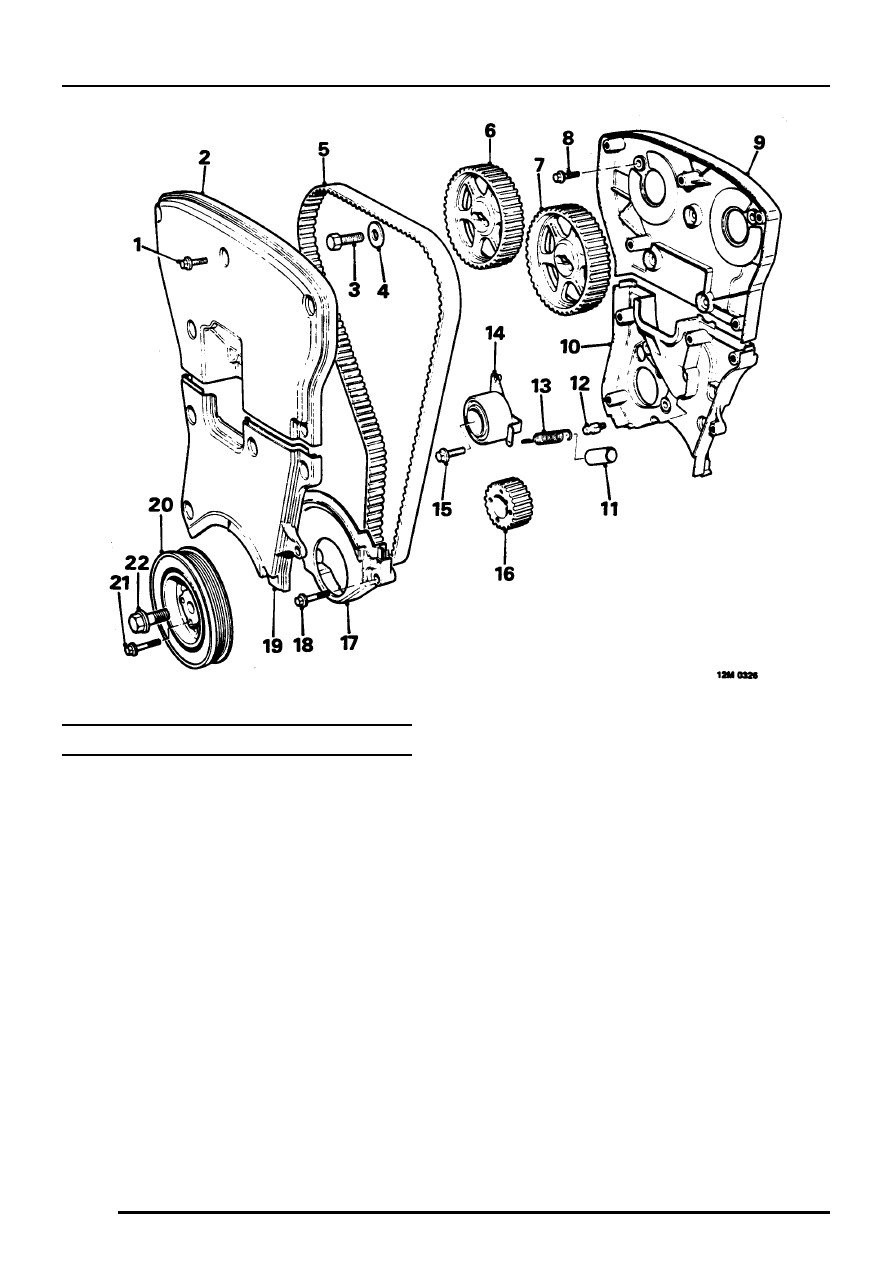Land Rover Engine 2.0 Litre T Series. Manual - part 3

ENGINE
10
DESCRIPTION AND OPERATION
TIMING BELT COMPONENTS
1. Bolt - timing belt upper cover
2. Timing belt upper cover
3. Bolt - camshaft timing gear
4. Plain washer
5. Timing belt
6. Inlet camshaft timing gear
7. Exhaust camshaft timing gear
8. Bolt - upper timing cover backplate
9. Upper timing cover backplate
10. Lower timing cover backplate
11. Tensioner spring sleeve
12. Anchorage bolt
13. Tensioner spring
14. Tensioner pulley
15. Tensioner clamp bolt
16. Crankshaft timing gear
17. Timing belt lower cover
18. Bolt - timing belt lower cover
19. Timing belt centre cover
20. Crankshaft pulley
21. Crankshaft pulley/timing gear bolt
22. Crankshaft pulley bolt